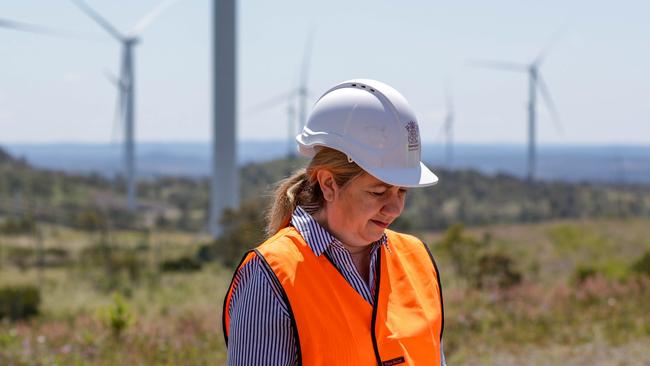Pumped hydro hubs centrepiece of the Palaszczuk government’s 10-year-energy plan
Two new pumped hydro mega-projects in regional Queensland will form the centrepiece of Premier Annastacia Palaszczuk’s 10-year-energy plan to be unveiled today.

Two new pumped hydro mega-projects in regional Queensland will form the centrepiece of the Palaszczuk government’s 10-year-energy plan, which will also flag a green conversion of its coal-fired power generators.
Premier Annastacia Palaszczuk will on Wednesday unveil plans for the multi-billion-dollar pumped hydro schemes – one based around Borumba Dam, near Gympie – as the Labor government attempts to accelerate the pace to meet its 50 per cent renewables target by 2030. It is understood the government has ruled out the early retirement of any of the state-owned coal-fired power stations, in the face of pressure from the powerful Electrical Trades Un-ion, which has thousands of members working in the system.
Instead, the government will tout the possible ongoing use of the power stations – which are becoming less financially viable – after the phase-out of coal with a green conversion of the turbines that produce the electricity.
In her annual “State of the State” address, Ms Palaszczuk will unveil plans to establish regional “energy hubs” as part of the state’s transition away from its dependence on coal and gas and hasten its efforts to meet the 50 per cent renewables target, first set in 2017.

Under the secretive plan, the massive infrastructure bill – kicked off this week with the Palaszczuk government’s announcement it will build a $750m solar farm in central Queensland – is hoped to be paid for with a mix of federal funding and state and private investment. Private-sector investors in renewable projects in the hubs, such as solar and wind farms, will be guaranteed state contracts for their power.
The two major pumped hydro projects will remain state-owned and are intended to address power storage challenges of wind and solar power.
Government sources said the projects were “massive investments”.
The dependence on the two pumped hydro projects comes just weeks after it was revealed that the Snowy 2.0 pumped-hydro project had been hit with delays and a $2.2bn cost overrun by its lead builder, with Snowy chief executive Paul Broad sensationally quitting four days later.
Last year, the state government announced it was tendering for initial engineering and consulting services to deliver design and costings for the Borumba Dam Pumped Hydro Energy Storage (PHES) project, near Gympie.
It promises 24-hour storage and the potential to power up to 1.5 million homes and support 2000 construction jobs.
Earlier this year, the government announced it was looking for a second site for a pumped hydro project, which uses renewables to pump water “up hill” during the day and then release the water at night to drive turbines and generate electricity.
The project may face a tough political fight, depending on the site, with the Greens opposing the construction of new dams in Queensland in the past few years.
Government sources have this week told The Australian that while Queensland was also considering changing its renewables target to be “more ambitious” than its current 50 per cent by 2030 aim, its emissions-reduction goal would remain the same.
The Palaszczuk government’s target, to cut 30 per cent of greenhouse gas emissions on 2005 levels by 2030, lags behind Anthony Albanese’s federal goal of 43 per cent by 2030, which passed the upper house this month.
NSW and Victoria have ambitions to cut their states’ emissions by 50 per cent by the decade’s end.
On the latest data, from 2020, Queensland has reduced emissions by 19 per cent since 2005, and 21.4 per cent of the electricity used in Queensland is produced from renewable energy sources.
On Tuesday, Ms Palaszczuk released new figures showing that more than 722,000 Queensland homes now have solar panels.
“Together, Queensland’s homes account to over 3.5GW capacity; that’s more generation capacity than Queensland’s two largest power stations combined (Gladstone 1680MW, Stanwell 1460MW),” Ms Palaszczuk said.








To join the conversation, please log in. Don't have an account? Register
Join the conversation, you are commenting as Logout